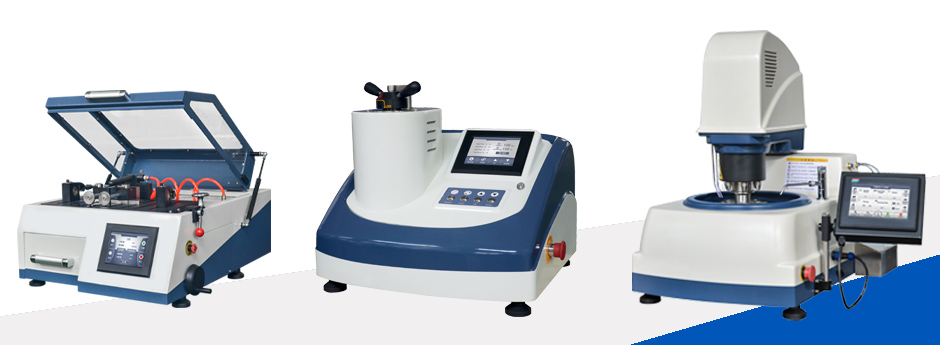What is metallography?
What is Metallography?
Metallography is the general description of the study of a metal material’s physical structure and components (phases and micro-constituents), typically examined after preparation by microscopic techniques.
Traditionally, metallography has been the study of the microscopic structure of metals and alloys using optical metallographs, electron microscopes or other surface analysis equipment. More recently, as materials have evolved, metallography has expanded to incorporate materials ranging from electronics to sporting good composites. By analyzing a material’s microstructure, its performance and reliability can be better understood. Metallography is a key component for material development, production/manufacturing controls, quality inspections and failure analysis.

What is the basic steps for proper metallographic examination?
With the aid of various cutting and preparation methods, it is possible for us to dismantle precisely individual components or entire assemblies and prepare the smallest damaged areas microscopically:
Cutting- Cut specific areas, paying special attention to maintaining sample identification and orientation.
Mounting- Maintain orientation and select appropriate mounting medium to optimize edge retention.
Grinding and Polishing- Successively finer grinding papers and diamond suspensions for optimal smoothness (to 1 micron)
Etching- Polished samples are etched with material-specific etchant to reveal microstructure
During evaluation, mounted specimens are examined immediately after drying the etched sample, using an optical microscope at magnifications up to 1000X. Ratings are performed across each surface of interest, with images captured for typical conditions and worst-case field conditions.
Metallography is the general description of the study of a metal material’s physical structure and components (phases and micro-constituents), typically examined after preparation by microscopic techniques.
Traditionally, metallography has been the study of the microscopic structure of metals and alloys using optical metallographs, electron microscopes or other surface analysis equipment. More recently, as materials have evolved, metallography has expanded to incorporate materials ranging from electronics to sporting good composites. By analyzing a material’s microstructure, its performance and reliability can be better understood. Metallography is a key component for material development, production/manufacturing controls, quality inspections and failure analysis.

What is the basic steps for proper metallographic examination?
With the aid of various cutting and preparation methods, it is possible for us to dismantle precisely individual components or entire assemblies and prepare the smallest damaged areas microscopically:
Cutting- Cut specific areas, paying special attention to maintaining sample identification and orientation.
Mounting- Maintain orientation and select appropriate mounting medium to optimize edge retention.
Grinding and Polishing- Successively finer grinding papers and diamond suspensions for optimal smoothness (to 1 micron)
Etching- Polished samples are etched with material-specific etchant to reveal microstructure
During evaluation, mounted specimens are examined immediately after drying the etched sample, using an optical microscope at magnifications up to 1000X. Ratings are performed across each surface of interest, with images captured for typical conditions and worst-case field conditions.
- Previous:Sorry, no more.
- Next:Why is Your Metallographic Mounting Important?
Send your message to us:



